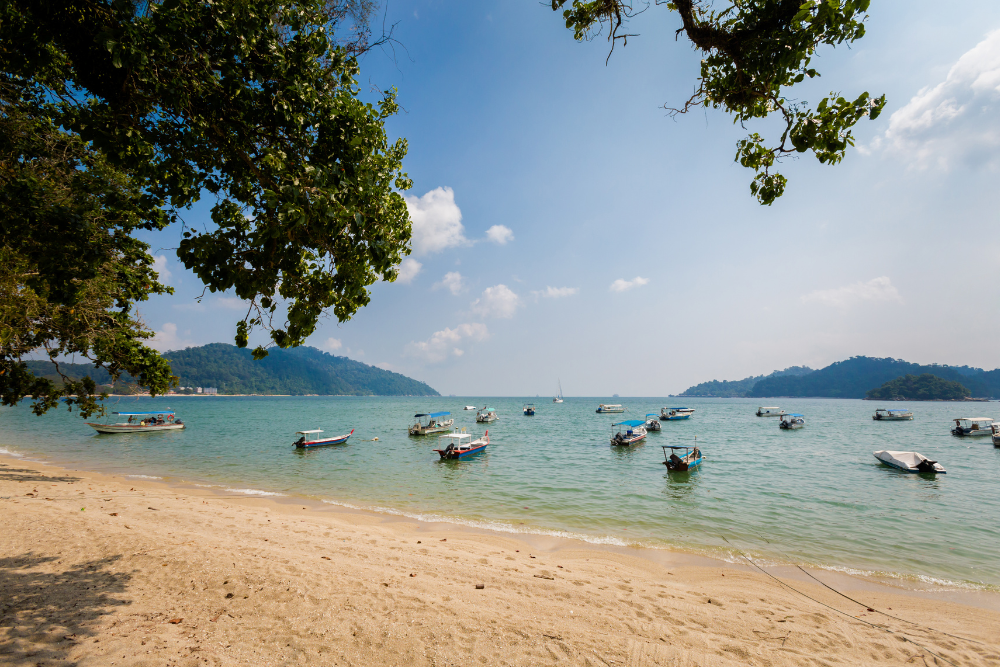Malaysia is home to some of the most beautiful and diverse islands in Southeast Asia. From the pristine beaches of Langkawi to the crystal-clear waters of the Perhentian Islands, Malaysia offers a tropical paradise for every kind of traveler. But, exploring these idyllic islands doesn’t always have to break the bank. With a little planning and smart choices, you can enjoy the best of Malaysia’s islands without spending a fortune. Here’s your guide to exploring the Malaysian islands on a budget.
1. Choose Budget-Friendly Islands
While popular islands like Langkawi, Penang, and the Perhentian Islands can be more expensive due to their popularity, there are several lesser-known and more budget-friendly islands in Malaysia that offer similar beauty without the high price tag.
Budget-Friendly Islands:
- Langkawi: Despite being a popular destination, Langkawi offers budget options like affordable guesthouses, street food, and inexpensive local transportation.
- Pulau Pangkor (Pangkor Island): Pangkor is one of the most affordable island destinations in Malaysia. Known for its laid-back atmosphere and beautiful beaches, Pangkor offers budget accommodations, public transportation, and cheap local food.
- Kota Kinabalu (Sabah): While not technically an island, it’s close to some of the best budget-friendly islands in Malaysia, such as Manukan Island and Sapi Island, both of which offer affordable day trips and snorkeling opportunities.
- Tioman Island: Although Tioman can be pricier than Pangkor, it still offers affordable options in terms of accommodation and activities. Budget hotels and affordable local restaurants are easily found.
- Pulau Sibu: Located off the coast of Johor, Sibu offers affordable homestays and beach resorts compared to the more high-end alternatives found in other parts of Malaysia. It’s perfect for those looking for a quieter and less commercialized experience.
Tip: Research the cost of accommodation and daily expenses before choosing your island. Lesser-known islands tend to have more budget options.
2. Travel Off-Peak Seasons
One of the most effective ways to save money on your island getaway is to travel during off-peak seasons. Malaysia’s islands see their highest number of visitors between December and February, as well as during school holidays. To avoid inflated prices, consider traveling outside these peak months.
Best Time to Visit on a Budget:
- March to May: This period offers pleasant weather without the high season prices. Many islands offer discounts on accommodations and tours.
- September to November: These months are ideal for budget travel as they fall just before the monsoon season begins in many areas, such as the Perhentian Islands, when accommodation prices drop significantly.
- Avoid Holidays: Malaysia’s public holidays (like Chinese New Year, Hari Raya, and Deepavali) attract large numbers of domestic tourists, which can drive up prices for flights, hotels, and tours.
3. Opt for Budget Accommodations
Accommodation is one of the largest expenses when traveling to an island. However, Malaysia has a variety of budget-friendly lodging options, ranging from affordable hostels to cozy beach bungalows and homestays.
Affordable Accommodation Options:
- Hostels: Many islands have budget-friendly hostels that cater to backpackers and solo travelers. Hostels are great for those traveling on a budget as they provide cheap dormitory beds and often include amenities like free Wi-Fi.
- Guesthouses & Homestays: Opting for a guesthouse or homestay can significantly reduce your costs. In places like Langkawi and Penang, you can find simple but comfortable rooms that are more affordable than large hotels and resorts.
- Beach Bungalows: Some islands, such as Tioman and Pulau Sibu, have small beachside bungalows that are very affordable, especially if you book during the off-peak season.
- Airbnb: Platforms like Airbnb offer a wide range of budget-friendly rentals, from private rooms to small apartments or cottages that offer better rates compared to large resorts.
Tip: Book your accommodation in advance through websites like Booking.com, Agoda, or Hostelworld to find the best deals, especially during off-season months.
4. Use Public Transportation
One of the easiest ways to keep costs low while traveling on the Malaysian islands is to rely on public transportation. This is a far cheaper alternative to taxis or rental cars.
Public Transport Options:
- Ferries: Many Malaysian islands are accessible by ferries, which are usually affordable and reliable. For instance, getting to Langkawi from the mainland or Penang to nearby islands is very budget-friendly.
- Island Shuttles: On some islands, local buses or shuttle services are available, offering inexpensive rides between beaches, tourist sites, and popular areas. For example, Langkawi has affordable local bus services, while Pulau Pangkor has easy-to-use minibuses that can take you around.
- Bicycles and Scooters: On islands like Koh Lipe and Tioman, renting a bicycle or scooter is a budget-friendly way to explore the island at your own pace. Rates are often very reasonable, and it can save you money compared to taking taxis or tours.
Tip: Research the island’s transport system to see if multi-day passes or ferry tickets offer discounted rates for travelers.
5. Enjoy Local Cuisine
Eating out at international restaurants or resort dining establishments can quickly add up. Instead, embrace local cuisine and enjoy the delicious street food and small eateries available on most Malaysian islands. Malaysian food is diverse, flavorful, and incredibly affordable.
Where to Eat on a Budget:
- Local Markets and Hawker Stalls: Street food is not only affordable but also one of the best ways to experience the local culture. Try nasi lemak, char kway teow, satay, and fresh seafood at hawker stalls or local markets for an authentic and budget-friendly meal.
- Beachside Warungs (Cafes): Many islands have beachfront cafes that offer delicious and affordable seafood, snacks, and traditional dishes. For example, Pulau Pangkor has inexpensive seafood restaurants along the beach.
- Food Courts: If you’re in larger towns like Kota Kinabalu, you can find food courts in shopping malls offering a variety of affordable local dishes in one place.
Tip: Avoid dining in touristy spots or upscale hotels and opt for locally-owned establishments to save on meals while still enjoying authentic flavors.
6. Explore Nature and Free Activities
Many of the best experiences on Malaysia’s islands are nature-based and come with little to no cost. From relaxing on quiet beaches to hiking through lush forests, Malaysia’s islands are full of natural beauty that doesn’t require you to spend much money.
Free Activities:
- Beaches: Spend your days relaxing on the beaches, swimming, or snorkeling. Popular islands like Langkawi, Perhentian, and Tioman have beautiful beaches that you can visit for free.
- Hiking and Nature Trails: Many islands have free hiking trails that take you to stunning viewpoints, waterfalls, and secluded beaches. Tioman Island and Langkawi offer great trekking opportunities for nature lovers.
- Snorkeling: If you have your own equipment, snorkeling is a cheap and exciting way to explore Malaysia’s underwater world. Some islands like Perhentian and Tioman have vibrant coral reefs accessible right off the shore.
- Local Villages and Culture: Exploring local villages or learning about island culture is a free way to connect with the community. You can also visit local markets to experience the island’s unique arts and crafts.
7. Look for Discounts and Packages
Many islands offer discounts for tourists, particularly if you book tours or activities in advance. Keep an eye out for deals on local activities like island-hopping, snorkeling tours, or cultural experiences.
Discount Strategies:
- Online Deals and Booking Sites: Websites like Klook, Viator, and GetYourGuide often offer discounted tours and activities, such as group island-hopping trips or discounts on dive packages.
- Package Deals: Some resorts and travel agencies offer packages that bundle accommodation, meals, and activities at a discounted rate. These packages can be a cost-effective way to explore multiple islands.
- Group Travel: Traveling with a group of friends can significantly reduce the costs of guided tours, boat trips, and taxis.
Conclusion
Exploring Malaysia’s islands on a budget is entirely possible with the right planning. By choosing less commercialized islands, traveling during the off-season, staying in budget accommodations, using public transport, and indulging in local cuisine, you can experience the beauty of Malaysia’s islands without breaking the bank. Embrace the natural beauty, adventure, and cultural experiences that these islands offer—while keeping your expenses low and your memories high.












